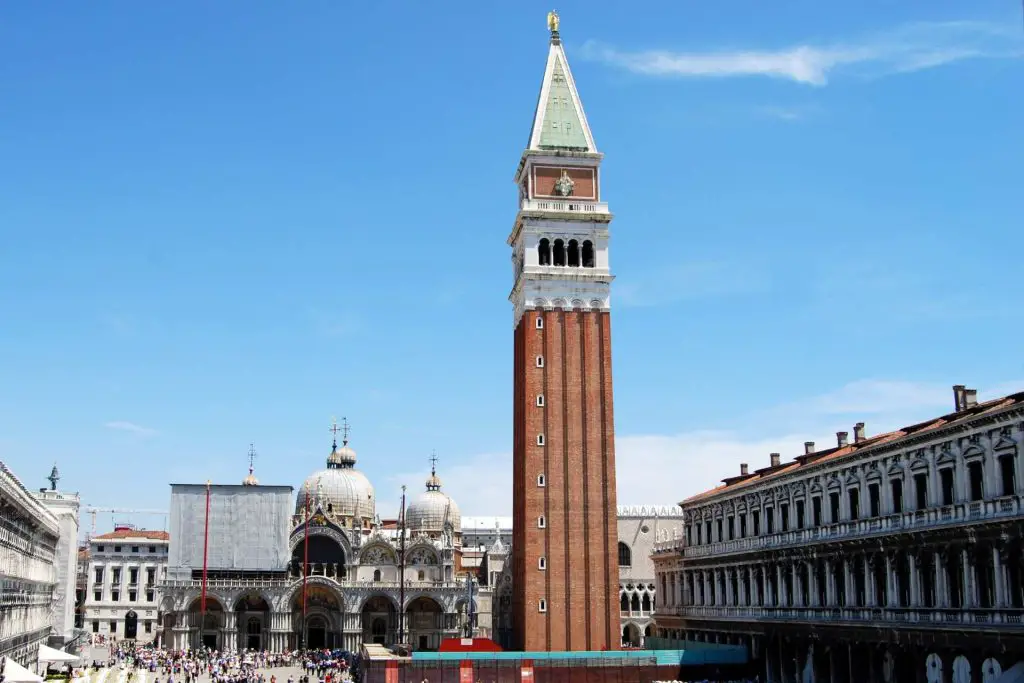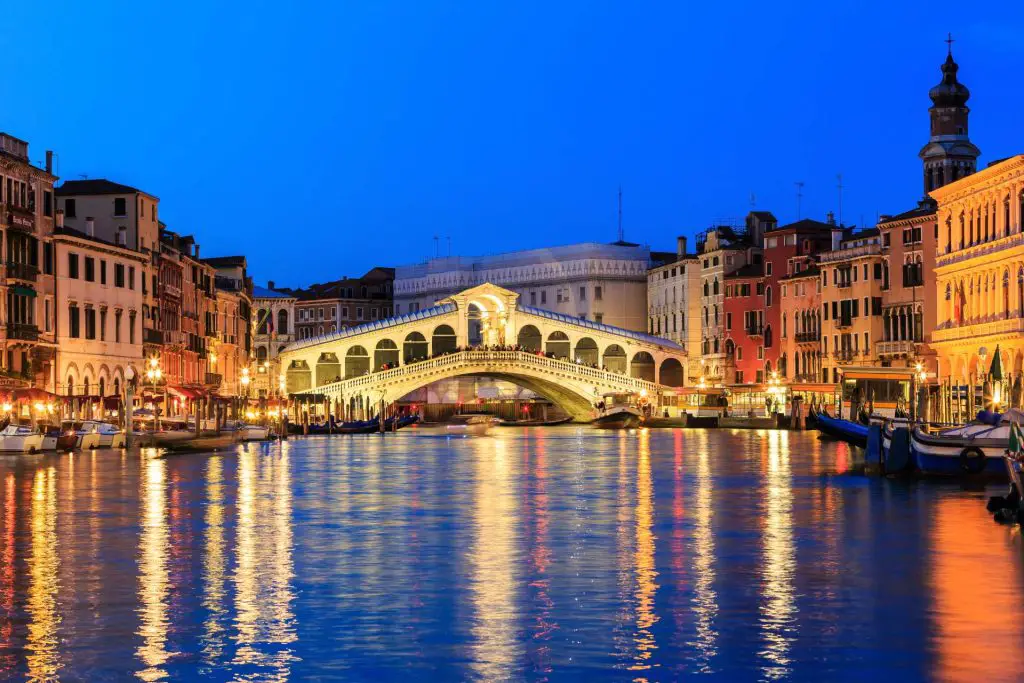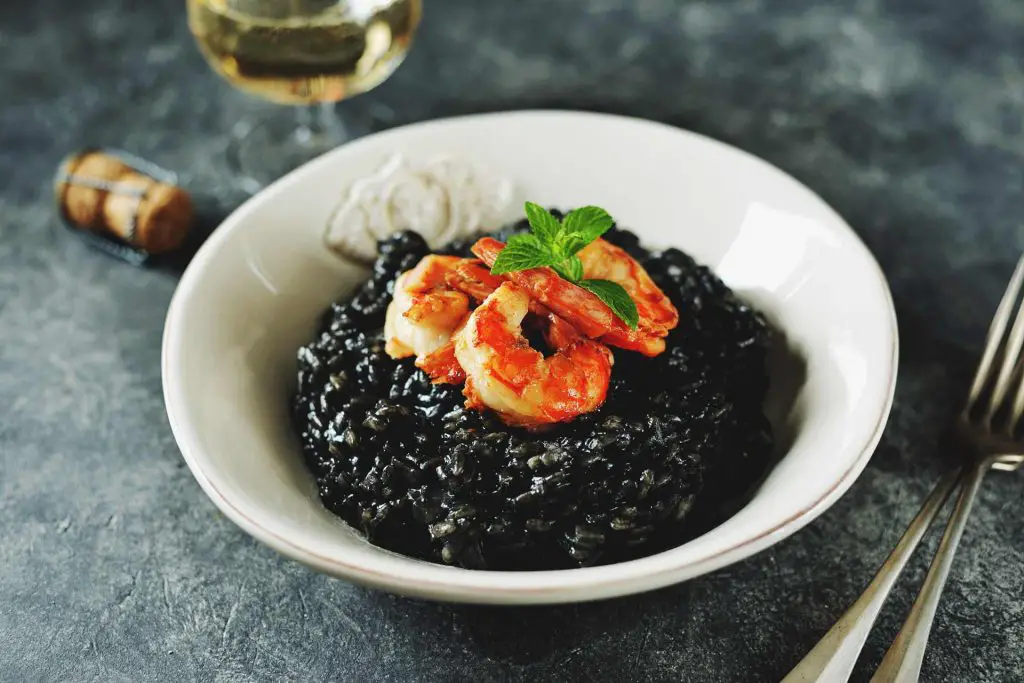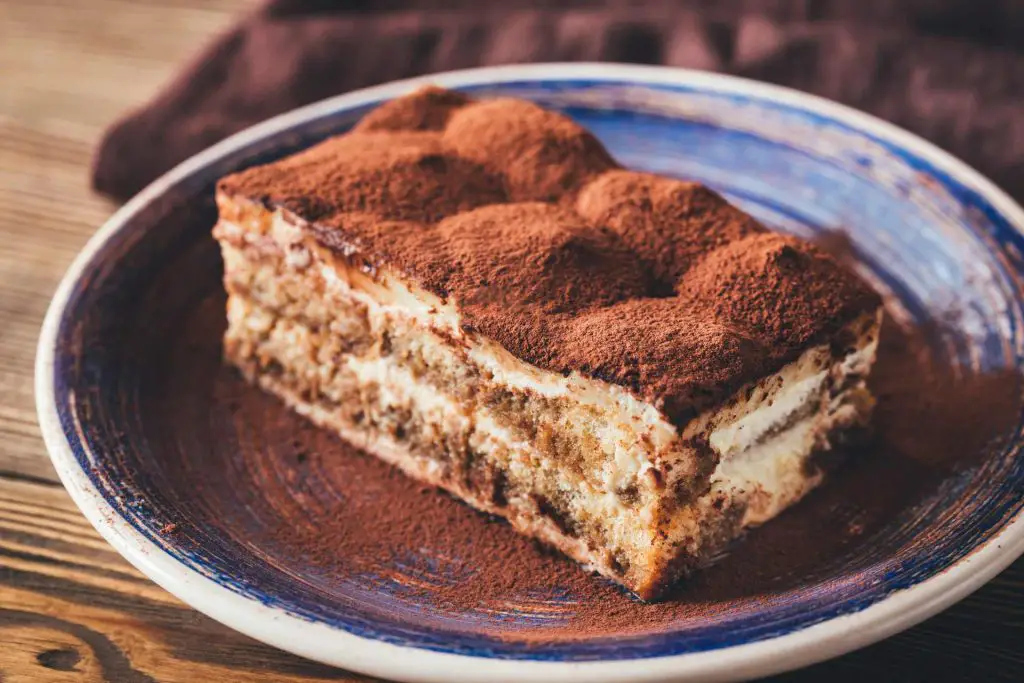Welcome to Venice, a district of canals where history and beauty meld together to create a kaleidoscope of places, sensations, and experiences of a unique kind. Venice, which is located in the heart of the Venetian Lagoon, is a fairy tale of Gothic architecture, legendary art, and waterways that inundate and lap in romantic ways. Stepping into this buoyant city, you are thrust into a realm where the soft rhythm of water along gondolas and the distant somber notes from church bells create the soundtrack for the trip that awaits you. Venice is not only a landmark to visit, but an unforgettable event itself, because every turn leaves the visitors in a new layer of the city’s history. Whether it is the romance of its cultural shows, the admiration you get from her art and architecture or the exciting feeling you have while you stroll the narrow alleys and bridges, this guide will take you to the very heart of Venice. We won’t stop with the famous Rialto Bridge or the majestic St. Mark’s Basilica but we will take you to the most spectacular landmarks, great tastes, and fascinating stories in the city.
“When I seek another word for ‘music’, I never find any other word than ‘Venice’.”
Friedrich Nietzsche
Ecce Homo
Nicknamed “The Floating City,” Venice is one of the most unique and romantic destinations in the world. Built on a lagoon with over 100 small islands connected by hundreds of bridges and picturesque canals instead of streets, Venice has captivated visitors for centuries with its one-of-a-kind architecture, art, history and ambience.

Venice tourist guide: getting there
The most common way for tourists to reach Venice is to fly into Venice Marco Polo Airport, located around 7 km from Venice on the mainland. From there you can take a water taxi or the Alilaguna water bus directly to destinations around Venice. Trains also run frequently from Venice Santa Lucia station on the Grand Canal to destinations like Rome, Florence and Milan. Once in Venice, the best way to get around is walking or booking a private water taxi. Just be prepared to get lost among the maze of back alleys and canals!
Venice tourist guide: top sights and monuments
Piazza San Marco
Piazza San Marco is a symbolic heart of Venice, a glorious reflection of the city’s grandiose past and the splendor that shaped its future. Being one of the most celebrated features of Venice, this giant square is not only a social point where both the locals and foreigners congregate, but a treasure house of art, history, and culture, surrounded by some of the most iconic landmarks the city offers. At the eastern part of the piazza, a Byzantine splendor of St. Mark’s Basilica, with its facades and opulent gold mosaics, doesn’t leave the skyline untouched, dominating it with its beauty. Telling the legend of ancient Venice, it’s described in the mosaic pieces that are composing the basilica’s interior. This true artistic gem, with its beautiful interweaving motifs between East and the West, has always been a physical manifestation of Venetian glory and loyalty. Venice’s might in the trade of the seas are well reflected by the Doge’s Palace nearby, with its lavish gothic facades which used to be for the former rulers.
Towering over the square, the Campanile, whose bells attract visitors from all over the world, is the perfect place to discover Venice from a bird’s eye view. Arriving at 323 feet, this towering vantage point allows visitors to catch one’s breath from the extraordinary views of the square beneath, the intricate labyrinth of canals and the large Venetian Lagoon. The unparalleled experience of climbing the Campanile and recognizing the astonishing beauty of the city stretched out before your eyes in an aerial view is incredible, you will not forget it for a second. Although Piazza San Marco is a representative symbol of Venetian former glory, it is also a living heart of modern life that Venetians lead now. An array of historic cafés line up the square where visitors can have a coppa while enjoying the vibrancy, all while being complemented by the musical notes from orchestras that are all over the world. From dusk to dawn, the square is transformed; the always singing birds are replaced by whispering lights that showcase the magic of the incomparable architecture, the taste of which lingers even after it has been visited. Whether you gaze in wonder at St. Mark’s Basilica, discover the allure of the Doge’s Palace, or get a vantage point of the city from the top of the Campanile, this square offers a journey through history, art, and beauty, that is the essence of Venice. It is a place that none of its corners is without a story, every stone is forever drenched in history and every visit must leave a mark in its memory.

St. Mark’s Basilica
Venice’s historic and cultural heritage is represented in the Venerable Saint Mark Basilica, a beacon of dedication and artistry that is a witness of the erstwhile glorious past in years gone by. Built during the 11th century, this cathedral is not only an architectural landmark but a secure place that contains many of the most stunning examples of Byzantine art that you can find anywhere. The Basilica’s opulent mosaics decorate the domes, interior walls, and arches for more than 80,000 square feet. This dazzling sight has been the main draw for tourists from around the world. The very minute you enter St. Mark’s Basilica, you are caught in a moment where everything on the wall conveys a subject of faith, art, and history. Golden mosaics from hundreds of tiny pieces which required painstaking work, bring the bright light from the sky to the inside of the basilica. They are the artful depiction of biblical scenes and saints in mixing of different colors of gold with silver surface. In St. Mark’s Basilica, among its many treasures, the Pala d’Oro, a stunning religious work of art, is a masterpiece. Stuffed with all these thousands of precious stones, including sapphires, emeralds, and pearls, this golden altarpiece is a marvelous and breathtaking demonstration of Venice’s wealth and artistic aspiration during its most prosperous age.
In the context of Venice being a crossroad of trade and culture, the dazzling composition of the Pala d’Oro with its intricate design and countless gemstones is one of the priciest and most striking works of art found in the cathedral.
The feeding of the souls extends beyond the mere visual, with a visit to St. Mark’s Basilica. This is a chance to see art, purpose, and history merging in one place which has been a matter of pride for long. As you make your way through the basilica, stopping to appreciate the mosaics and the brilliance of Pala d’Oro, you are treading on the footsteps of many pilgrims, artists, historians and others awed by its beauty.
Doge’s Palace
Today, Doge’s Palace is a symbol of the glorious splendor of Venice, which the palace proudly announces to the world. This Gothic palace, which graces the waterfront with its amazing façade and monumental architecture, testifies to the Venetian ability to combine lavishness and shrewdness and so to rise to a dominant position in the political and commercial networks of the Mediterranean during the thousand years of the Venetian republic. Then turned into the museum that gives visitors the opportunity to plunge into Venice’s unfathomable chronicles of power, wealth, and artistic achievement. The architecture of the palace is a masterpiece on its own. It is where Byzantine, Gothic, and Renaissance elements exude their harmony and the fact that Venice has served for ages as a center of artistic innovation and the cross-road of cultural exchanges are best witnessed. The entrance piece is decorated with beautiful tracery and carvings which lead into luxurious suites, corridor and yards filled with sculptures that once were the stomping grounds of the most influential Venetians. Within, the Doge’s Palace reveals itself as a shrine of history and fine works of art. These walls contain the works of the most famous artists of the Venetian school, notably Tintoretto and Veronese from whom hang the paintings that exalt the republic’s brilliant victories and virtues. Aesthetic features of the Doge’s apartments and grand council chambers translate into a widespread knowledge about the intricate management and pompous ceremonies of Venice’s Republic political life. The Bridge of Sighs is arguably one of the most memorable features of the Doge’s Palace; it is a closed walkway that links the palace to the historic prison. This bridge, called the Sighs, where prisoners took one last look and sighed of Venice before entering the prison, is an allegory for the contrast between city’s beauty and the sadness that it is made of. Bridge of sighs reminds us of a detailed story of justice and power which submerged Venice but also the path of its fate.
Visiting the Doge’s Palace means getting first hand grip on the past. You learn to understand how power works, the mastery of Venetian arts, and the life stories of people that have left a mark in the texture of Venice. Every room, every artwork and painting is a substantial part of the great story of Venice. It is a story that sees visitors coming from far and wide to marvel at the legacy of a city that was once an admirable republic and inspiring ruler of many lands. The Doge’s Palace, the epicenter of Venice’s past glories, is also the symbol of a city with a timeless appeal that attracts visitors not only to its bygone splendor, but also to its exquisite beauty and mystery.
Rialto Bridge
The oldest and most famous of Venice’s 400+ bridges, the Rialto Bridge’s elegant marble arch over the Grand Canal is always crowded with tourists and vendors selling jewelry, art and souvenirs at the small shops lining it. The Rialto Bridge, with its storied past and architectural magnificence, rises as the venerable icon amidst Venice’s labyrinth of canals and bridges. Esteemed as the oldest and most celebrated bridge in Venice, it spans the Grand Canal with an elegance that has stood the test of time, captivating both the hearts and imaginations of those who walk its path. Built from Istrian marble, its robust yet graceful arc is a testament to the ingenuity and artistry of the Venetian Republic. Constructed in the late 16th century to replace a wooden bridge that had collapsed, the Rialto Bridge was an engineering marvel of its time. Designed by Antonio da Ponte, it defied skeptics with its daring single-span stone arch, a bold departure from the multi-arched designs common at the time. This architectural feat not only facilitated commerce and movement across the bustling Grand Canal but also symbolized the prosperity and enduring spirit of Venice.
Today, the Rialto Bridge is more than just a passageway; it is a vibrant marketplace and a hub of activity that continues to draw crowds. Tourists throng the bridge, lured by the enchanting views of the Grand Canal and the charm of the gondolas gliding below. The small shops that line the bridge, a tradition that dates back centuries, offer a colorful array of jewelry, art, and souvenirs, each telling a story of Venetian craftsmanship and heritage. The allure of the Rialto Bridge extends beyond its architectural grandeur and historical significance. It is a place where the past and present converge, offering a window into the soul of Venice. Here, amidst the buzz of vendors and the footsteps of countless visitors, one can feel the pulse of the city, a place where every stone and every view has been witness to centuries of human endeavor and emotion. The Rialto Bridge’s enduring popularity is also its bane, as it wrestles with the challenges of preserving its structural integrity and historic charm against the pressures of modern tourism. Yet, despite the crowds, the Rialto Bridge remains an essential experience for anyone visiting Venice, a symbol of the city’s resilience, beauty, and place in the world’s imagination. As you stand upon the Rialto Bridge, taking in the panoramic vistas of the Grand Canal and the historic facades that line its banks, you are participating in a tradition that spans generations. It is a moment of connection to the countless souls who have traversed its marble path, a testament to the timeless allure of Venice, a city that floats on water but stands firm in the hearts of those who have beheld its splendor.

Grand Canal
This major water thoroughfare lined with over 170 buildings showcases the best of Venetian architecture over six centuries. Take a gondola ride or water bus down the canal for jaw-dropping views of former palaces, churches and extravagant homes of the wealthy.
Gallerie dell’Accademia
Housed in a former monastery, Gallerie dell’Accademia features the world’s best collection of Venetian art. See masterpieces like Veronese’s Feast in the House of Levi and Titian’s iconic Assumption of the Virgin.
Murano & Burano Islands
Just a short vaporetto ride from central Venice lie these two small islands each with their own claim to fame. Murano has been the home of Venetian glassmaking for 700 years while Burano draws visitors to its colorful storybook houses and lacemaking tradition.
Venice tourist guide: cuisine
Its intricate waterways and rich maritime history make Venice a mirror of its unique geographical and cultural heritage in terms of food. Its flavors are a fusion of the sea’s abundance with Italian traditional cuisine and these have made dishes that can never be forgotten like the city. The tradition of bacari, which are small bars scattered all over town where you can enjoy small snacks referred to as cicchetti with wine or spritz, is central to understanding Venice’s culinary traditions. Dishes like sarde in saor, for example, encapsulate the essence of Venetian cuisine: it is a recipe that involves frying sardines and soaking them into a mixture made up of vinegar, onions, and pine nuts. Its taste contains both sweet and sour flavors in an attempt to reflect historical trade routes of the city as well as its penchant for assimilating varied culinary tastes. In addition, fegato alla veneziana is a simple dish made from liver cooked along with onions; it reveals rustic food from Venice while risotto al nero di seppia demonstrates sophistication when it comes to seafood by getting its dark color from squid ink.

Pasta, another cornerstone in Italian cuisine, assumes an essentially Venetian aspect when combined with rich and savory seafood sauces. This makes the flavors both bold and sophisticated by incorporating the fresh catch from lagoon and surrounding seas that are a perfect match for this pasta. A trip through Venice’s culinary history would not be complete without experience of the city’s desserts. Tiramisu, which may arguably be said to be one of Italy’s most famous contributions to sweet dishes, has its roots deeply implanted in Venetian culture. The dessert is made of layers of ladyfingers soaked in coffee, mascarpone cheese and dusted with cocoa reflecting a deep love for sweet foods in Venice. Equally fascinating are the traditional doughnuts boiled until brown then sprinkled with sugar providing a simple tasty way to end a meal on a sugary note. The bacari serve as important establishments in Venice’s eating culture as they provide areas where people can enjoy these food cultures in informal settings. In this place, amidst the clatter of glasses being raised and conversations being held; visitors can enter into their gastronomic journey through Venice one cicchetto at a time. Not only do such taverns serve as a gateway to Venetian cuisine but also, they exemplify the kind of community and leisure towards which the city stands.

Venice’s call is inevitable as you move around its narrow roads and across its famous bridges. Venice calls upon everyone to taste its diverse food flavors including those that are present in its traditional dishes; and to enjoy having drinks in bacari where warmth embraces all. The joy of eating is something you will experience here since it has many scents that go together with tastes and this gives rise to the senses by reflecting Venetian hospitality and inventiveness that springs out from the room for which Veronese art is most effective.

Shopping
While Venice today relies more heavily on tourism than trade, visitors can still shop for traditional handicrafts and products descended from early Venetian merchants. Look for glasswork, paper products marbled by hand, intricate lace, fancy costumes and ceramics intricately decorated with Venetian motifs or masks. Don’t miss the Mercatino dei Miracoli flea market by the Rialto for antiques, books and art. The Mercerie near Piazza San Marco offers most high-end shopping.
Carnival of Venice
The Carnival of Venice annual festival forty days before Easter typically lasts about 2 weeks in February/early March. Venetians don ornate masks and costumes for masked balls and street celebrations before Lent. The elaborate masks represent characters from the Italian theater known as Commedia dell’arte. You’ll see Costumed performers acting out scenes, acrobats, jugglers and musicians at shows and on the streets.

Venice tourist guide: gondola rides
No trip to Venice is complete without a ride on one of its famous slim black boats down the canals with your gondolier singing traditional tunes. They seat about six people, so you may ride with others to share costs. Rides last around 40 minutes along the interior side canals for a uniquely Venetian experience away from the main thoroughfares.

Venice tourist guide: hidden gems
Venice rewards those who wander off the main tourist routes. The island of Giudecca across the Giudecca Canal feels almost undiscovered compared to central Venice yet has trendy cafes, art galleries and sweeping views. The islands of Torcello, Mazzorbo and the Lido offer a peaceful escape along with traces of Venice’s rural past before the canals. No matter your interests – history, art, architecture, music, wine, cuisine or simply ambience – Venice offers an unforgettable Italian backdrop. Come ready to get lost among the postcard-perfect canals and calli (alleyways) only to discover yet another hidden jewel as enchanting as those found in Venice’s long and captivating history.
The bottom line
Venice casts an enchanting spell that has endured for centuries, luring visitors into its labyrinth of canals and alleys where beauty, history, and wonder dwell around every turn. As this guide has shown, the “Floating City” offers iconic landmarks like St. Mark’s Square and the Rialto Bridge, magnificent Byzantine and Gothic architecture in St. Mark’s Basilica and the Doge’s Palace, vibrant street life and culture, delectable cuisine from the sea, and age-old traditions of glasswork, and carnival masks. Yet the true magic of Venice lies not only in its grand monuments and sights, but also in wandering its hidden corners, losing oneself down a slender canal or over an unmarked bridge, happening upon a quiet campiello or secret garden. The Venice in our imagination is there to be discovered, an alley that leads right to the quayside of our dreams. Whether gliding in a gondola down the Grand Canal, happening upon exquisite art in a neighborhood church, or watching the sun set over San Giorgio Maggiore island from a little osteria, Venice rewards those who explore its many facets. An enchanted realm that exists outside of time, Venice holds a beauty and allure no other place on earth can match.

